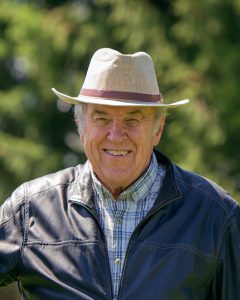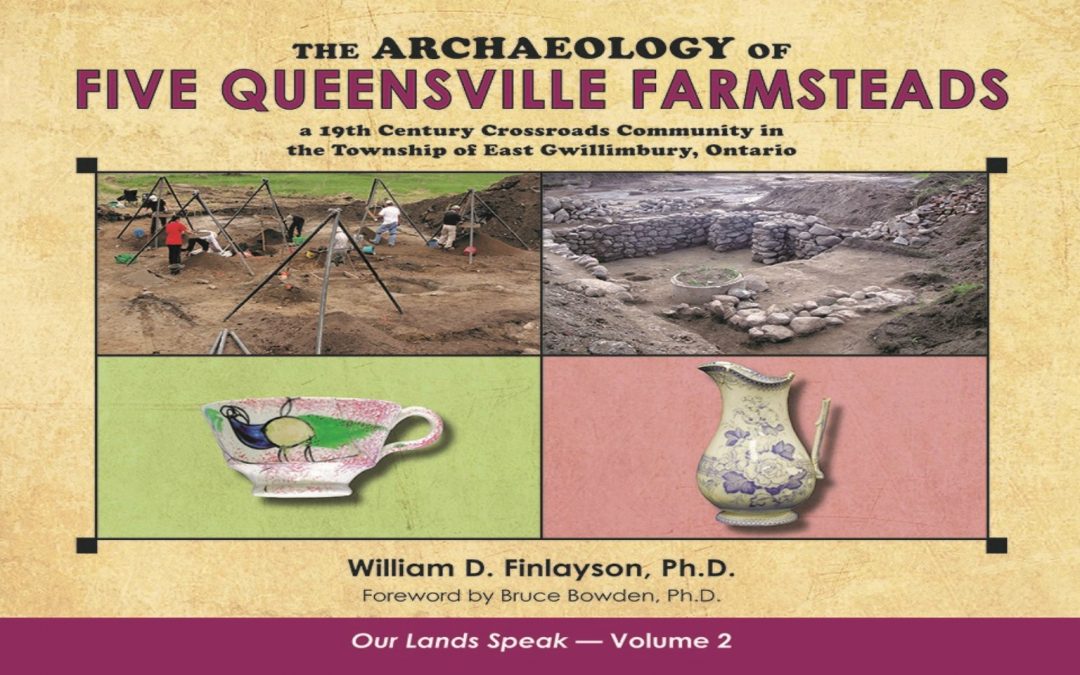As the second volume in his prolific series, Our Lands Speak, William (Bill) Finlayson once again brings the past to life. This time, it is through the lives of the generations of people who settled in Queensville, Ontario. The Archaeology of Five Queensville Farmsteads – a 19th Century Crossroads Community in the Township of East Gwillimbury, Ontario, affords us a glimpse into what life was like for the master builders of the Sharon Temple, a unique architectural structure in Canada. We learn how they, their families, and many others who built the community and made it their home, lived.
The meticulous archaeological work that Bill and his team completed on the five Queensville farmsteads is documented and photographed, and shared with us in this book. The beautiful images of artifacts give us fascinating look into the personal lives of the residents, including rare finds of complete or almost complete dinnerware and tableware. Special insights into day-to-day life in 1871 are revealed through entries in the diary of Ezra Doan, the grandson of Ebenezer Doan, a master builder of the Sharon Temple.
Check out the following excerpt from Bill’s most recent blog:
“This year, 2018, marks the 100th anniversary of the preservation of the Sharon  Temple and its operation of a museum open to the public—and you’re invited to the celebrations on Sat, Sept 8 at 2pm.
Temple and its operation of a museum open to the public—and you’re invited to the celebrations on Sat, Sept 8 at 2pm.
It is a happy coincidence that this year also sees the publication of the second volume in Our Lands Speaks, a publication series dedicated to disseminating the results of archaeological investigations by my company, This Land Archaeology Inc. Entitled The Archaeology of Five Queensville Farmsteads: a Crossroads Community in East Gwillimbury Township, Ontario, this book details the excavation of five archaeological sites over the past 11 years for Queensville Properties Development Corporation and DG Group.
Sharon Temple is a meeting house constructed by the Children of Peace, a sect of Quakers, who with 20,000 other Quakers fled the United States because of religious persecution in the early 19th century. This sect was lead by the charismatic David Willson. Sharon Temple was constructed between 1825 and 1831 and was used as a special meeting place beginning in 1832. “It was reserved for meetings and the collection of alms on the last Saturday of each month, for feasts on ’June Day,’ and at the Illumination in September, and for a Christmas worship meeting. Weekly meetings for worship were held in one of two meeting houses” nearby (Farm and Schrauwers 2005:8). David Willson’s plan for the temple “was inspired by biblical descriptions of Solomon’s Temple and the New Jerusalem. The square plan symbolized the sect’s egalitarian beliefs and co-operative principles” (ibid:10) . . .
It is discoveries such as these with links to a nationally significant site, the Sharon Temple, which bring to life the results of our labours to salvage sites before their destruction and justify the support of our clients who assist us in preserving the past with admirable responsibility. My thanks to all who have made these works possible . . .”
Dr. Finlayson’s dedication to his craft of unearthing the past, and his passion to share his discoveries with us in the present, help ensure that the history of Ontario—its people, communities, and ancestry—remains vibrant and relevant.
If you can, we hope to see you on Sat, Sept 8 at 2 pm, at the 100th year celebrations of the Sharon Temple, where Bill will be a guest speaker and you’ll get to learn more about his work, Our Lands Speak series, and our local history.
Sincerely,
Sheri Andrunyk
I C Publishing & Consulting / I C Bookstore
Committed to Quality Content, Design, and Platform
Bridging the gap between self and traditional publishing
Coaching and mentoring in business for over 30 years





Recent Comments